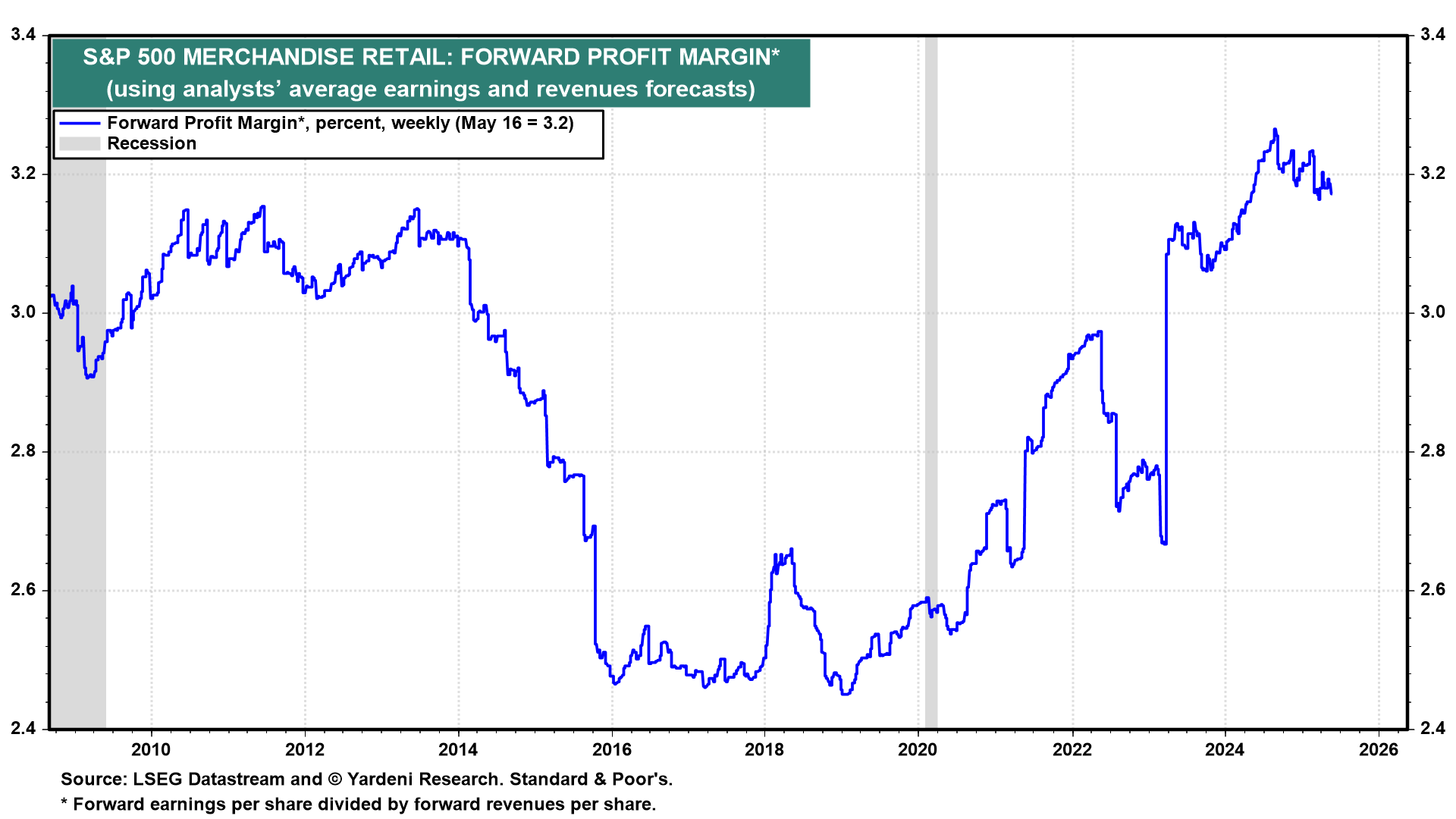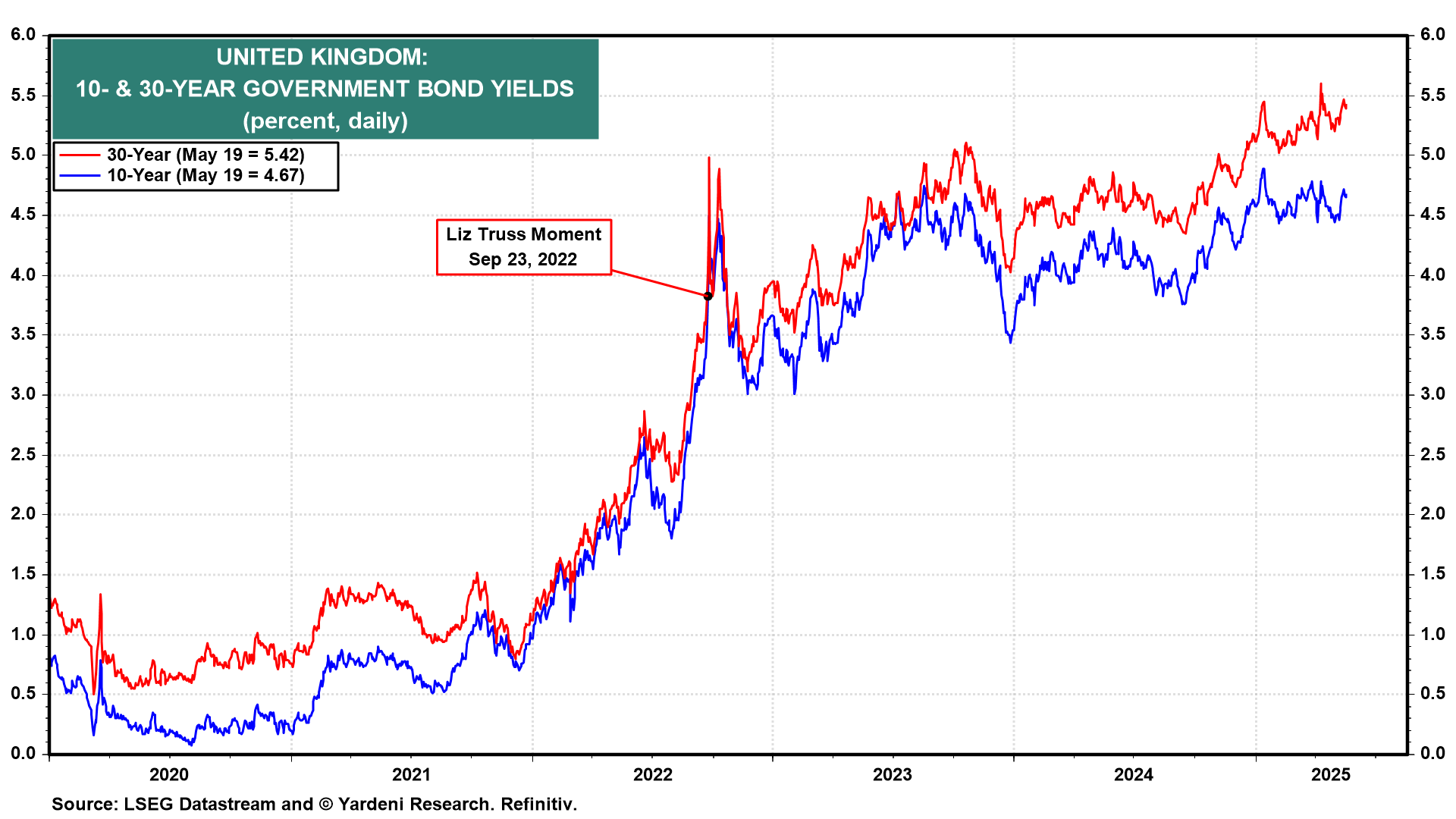Moody’s downgrades Senegal to Caa1 amid rising debt concerns
Walmart (NYSE:WMT) warned last week that it will have to raise prices because of President Donald Trump’s tariffs. On Saturday, the President advised the country’s largest retailer that it should "eat the tariffs." Retailers operate with very thin profit margins (chart). If they don’t raise their prices, they stand to lose money on their sales. That’s not a sustainable business model.
Earlier this month, Ford Motor (NYSE:F) raised prices on three models assembled in Mexico as a result of Trump’s tariffs on imported autos. Subaru’s price increases will add between $750 and $2,055 to vehicles depending on the model and trim, according to a notice posted on a dealer website. The price increases are expected to hit vehicles on dealer lots starting in June, according to the notice.
While the bond market may be just starting to anticipate a bout of higher inflation in coming months, it got hit on Friday with Moody’s downgrade of the credit rating of US government debt. In addition, bond investors are closely and nervously monitoring budget talks in Washington.
The Committee for a Responsible Federal Budget observes that the House is considering a reconciliation package that is shaping up to add $3.3 trillion to the federal government’s debt over a decade, as written—or $5.2 trillion if temporary provisions are made permanent.
The Committee warns that what happened in the UK in 2022 could happen again here too: On September 23, 2022, the UK’s Chancellor of the Exchequer (i.e., finance minister) announced a "mini-budget" that, as written, provided temporary relief for households on energy prices along with permanent tax cuts.
Amid already weak demand for government debt securities at the time and underlying inflation concerns, bond yields surged (chart). In response, then-Prime Minister Liz Truss fired the Chancellor, abandoned her proposal, and eventually resigned.
Here in the US, the 30-year Treasury bond yield rose above 5.00% on an intra-day basis today (chart). That’s close to 2023’s cyclical high, which was hit when sloppy Treasury bond auctions signaled that the supply of Treasuries was weighing on the market. The bond market may be starting to anticipate a similar concern ahead, along with somewhat hotter inflation numbers.
